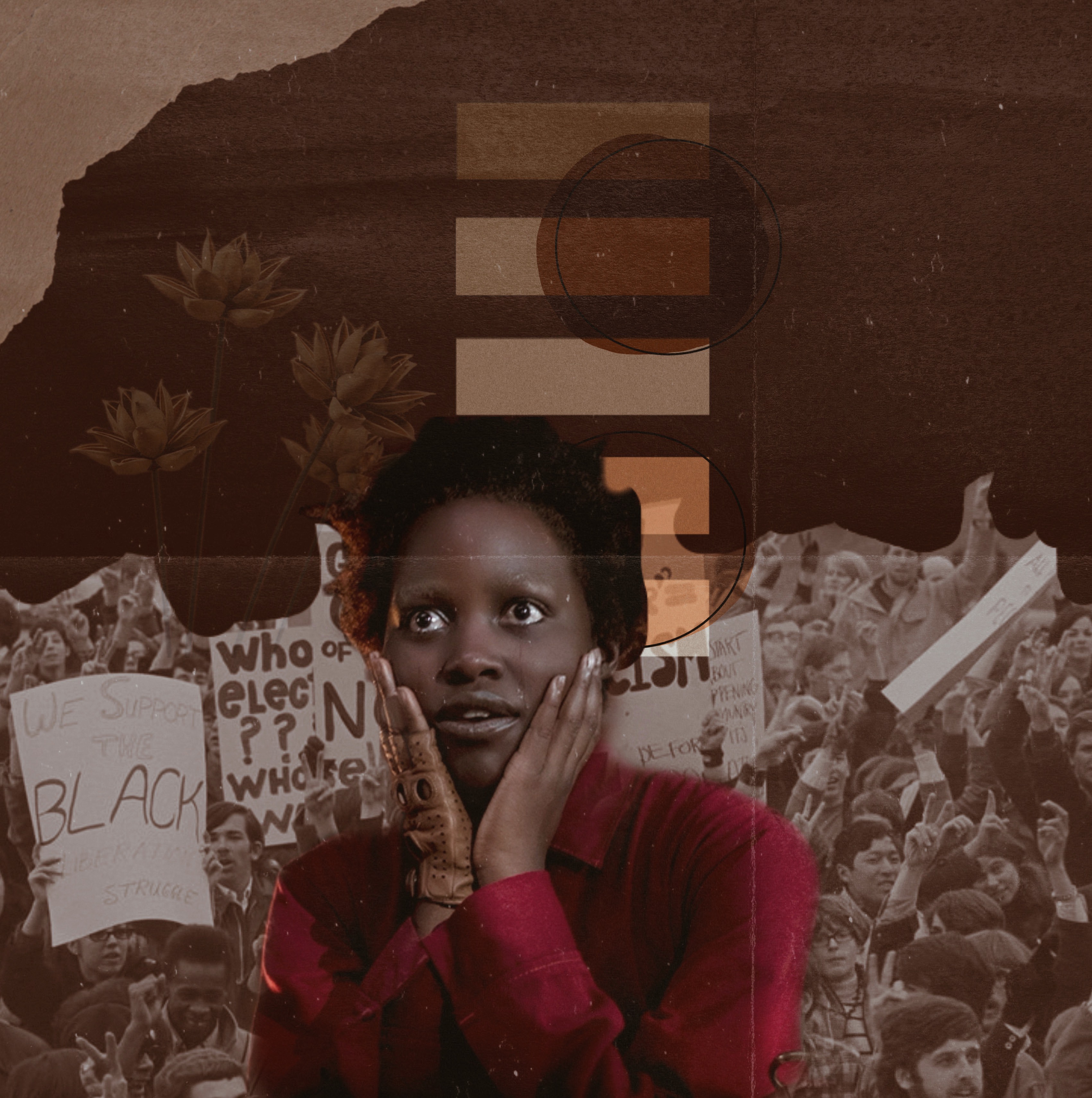
Director Alfred Hitchcock once said, “Blondes make the best victims, they’re like virgin snow that shows up all the bloody footprints.” In the Hitchcock era of horror, women (usually white) were often subject to violent, exploitative treatment because their perceived innocence allowed them to serve as the perfect vehicle for exploring societal fears. In the 1970s and 1980s, this promised to change with the rising popularity of a new, sensational horror genre: The Slasher. The Slasher Genre is defined by a few central qualities: gore, a killer targeting an unsuspecting group, and a ‘Final Girl.’ The Final Girl character archetype, coined by author Carol J. Clover in her 1992 novel “Men, Women, and Chainsaws” is a staple of any Slasher film.
The term refers to the last female character standing at the end of the horror film who is presumably the one to live to tell the tale where, in horror films of the past, women were exclusively victims who were always the first to die.
The character has become increasingly prevalent in the horror genre and has progressed with modern society, becoming more feminist and complex. However, depictions of the archetype continue to remain predominantly white and often demonize female sexuality.
To understand how the Final Girl has evolved, it is first necessary to understand the archetype at its core. The typical Final Girl possesses heightened awareness, a reserved, socially awkward nature, and strong willpower. Horror films reflect a culture’s collective fears. Via the Final Girl, they are also indicative of a culture values.

A Cautionary Tale
In the 1970s, pop culture consisted of romanticized portrayals of drugs, sex, and violence. To many, this posed a threat to morality and the concept of the 1950s nuclear family ideal. Thus, Slashers of this time period reflected this growing cultural panic by demonizing sexuality. Consequently, women in horror were punished for engaging in sexual activity while virginal women are rewarded with Final Girl status. In 2010, Criminology Studies Professor Andrew Welsh studied this phenomenon. Welsh sampled 50 North American films from 1960-2010 at random and examined the deaths of each victim. The study took into account gender, involvement in sexual activity, and the nature of each victim’s death.
Welsh observed that women who didn’t engage in sexual activity were significantly more likely to survive than those who did. The fifty year scope of Welsh’s investigation suggests that this trend of sexual activity representing a dangerous moral transgression for female characters has withstood the test of time. Moreover, it is at least somewhat reflective of societal attitudes surrounding “promiscuous” women. Ultimately, the Final Girl remains “pure” while her peers succumb to their “sinful” desires, making her a more favorable choice for the film’s sole survivor because she encompasses the audience’s values (or at least what they should value).

Earlier Iterations
Nearly 12 years later, society has become more progressive and subsequently more inclined to accept different types of women. This has resulted in the Final Girl becoming a more faceted character that serves a purpose beyond providing a juxtaposition to her counterparts. The first Final Girl appeared in the 1974 film The Texas Chainsaw Massacre as Sally Hardesty. While those around her engage in sex and substance use, Sally concentrates her attention on tending to her disabled brother.
While her “careless” friends are killed off, Sally is allowed to survive. This is due in part because of her heightened awareness, but more so because of sheer luck. Sally never fights back because this would disrupt her innocent, virtuous, image. Sally is drenched in blood that belongs to both her and the friends she watched die as the film concludes. She is struggling to run, limping in the sweltering heat as a lunatic chases after her with a whirring chainsaw. Sally is only able to escape because of coincidence; a driver halts to a screeching stop when he sees her screaming for help. Earlier iterations of the Final Girl, such as Sally, are martyrs who possess very little agency over their narratives.
Then and Now
Likewise, in the 1978 film Halloween, Laurie Strode encompasses all of the typical Final Girl traits: an aversion to sex, a socially awkward personality, and an awareness of things seemingly unseen by her peers. Like Sally, Laurie survives by hiding from and narrowly avoiding the killer, Michael Meyers, rather than actively fighting against him. Clover, the author who first identified the archetype, said “Angry displays of force may belong to the male, but cowering, crying and screaming belong to the female.” However, in more recent horror films, the Final Girl has gained more agency over her story and has evolved into a more empowering, complex character to reflect the increasing acceptance of feminism in society.
40 years later, Halloween gained a 2018 sequel. When we revisit Laurie, she has evolved to become a far more nuanced character than she once was. We can see how her trauma from the earlier film has impacted her and her relationships. She is paranoid, angry, and vengeful. She stocks up on weapons in hopes that Michael will return so that she can exact her revenge on him.

The Rise of Feminism
Similarly, in the 2019 film Ready or Not, when Final Girl Grace realizes that her husband’s family is trying to kill her during a deadly game of hide-and-seek, Grace not only fights back to protect herself, but she turns around and begins actively hunting her attempted killers, killing them off one by one. Stacie Ponder, owner of the horror blog Final Girl said of this shift, “Final Girls have become more proactive than reactive, they no longer survive out of sheer desperation, they often fight back by fighting first.” The modern Final Girl no longer has to rely on her virtuous traits to save her. She proactively takes fate into her own hands with her drive and abilities, making her a more empowering, feminist character.
The Role of Race
For all of the evolution the Final Girl has endured, one characteristic remains unchanged: the Final Girl is predominantly white. Upon researching this article, I browsed through countless different lists of the top 10-20 most influential Final Girls. At nearly every single list I looked at, every Final Girl named was white or white-passing.
This is because horror films capitalize upon the knowledge that their audience possesses a preconceived association between whiteness and innocence. A 2017 Georgetown Law study found that “Adults see Black girls as less innocent and less in need of protection as white girls of the same age”. Moreover, the Final Girl’s perceived innocence allows her to serve as a harsh contrast to the horrors of the film. Because Society adultifies Black women, they are not seen as vehicles for exploring society’s collective fears in the same way that white women are. This representation, or lack thereof, has serious implications on the way society views Black women and conceptualizes race in general.

Sending Signals
Films can have a significant influence on viewers’ belief systems. Research conducted at the Institute of Psychology in Moscow suggests that movies can significantly impact racial and gender stereotypes. The study concluded that if there is emotional involvement during viewing, the potency of the film’s influence increases. Thus, because of the adrenaline and terror they inspire, horror films trigger strong emotional responses from their viewers. This makes the underlying messages they convey regarding race and gender all the more impactful.
This message is present in films with racist propaganda such as the 1915 film, The Birth of a Nation. As explained by author Dick Lehr in a 2015 NPR interview, The Birth of a Nation portrayed emancipated slaves as “heathens” who were “primarily concerned with passing laws so they could marry white women and pray on them.”
This is eerily echoed by modern horror films, which rely on the central idea that white women and more eminently whiteness is in danger.
Moreover, in primarily portraying white women as Final Girls while killing off or outright excluding Black women entirely, horror films send a dangerous message that suggests Black women are disposable.
Final Thoughts
Furthermore, the Final Girl has persisted throughout the years and promises to continue developing with changes in cultural attitudes. The archetype has historically functioned to caution audiences about the dangers of acting ‘immorally’ but has since evolved with society. The Final Girl has developed from a damsel in distress to a more nuanced character who takes matters into her own hands. However, the trope continues to exclude less privileged women, calling into question just how feminist it really is.
If, like me, you can’t get enough of the Final Girl, check out GRL Mag’s Final Girl Playlist!
